You must’ve seen some chess videos from top events, and each time a player makes a move, they record it down on a paper.
Why is that? Is it compulsory? What do chess players write down?
They write down chess notations to record each move as it’s a requirement in standard chess tournaments.
Chess notations are a combination of symbols and alphanumeric characters that represent every move made on a chessboard.
We’ll explain this better in a minute.
Components of Chess Notations
Chess notations have three major components: Numbers, Letters, and Symbols.
Numbers
Numbers represent the ranks in chess notations, and there are eight ranks numbered 1-8. Like the letters, the numbers represent the square one can place a piece.
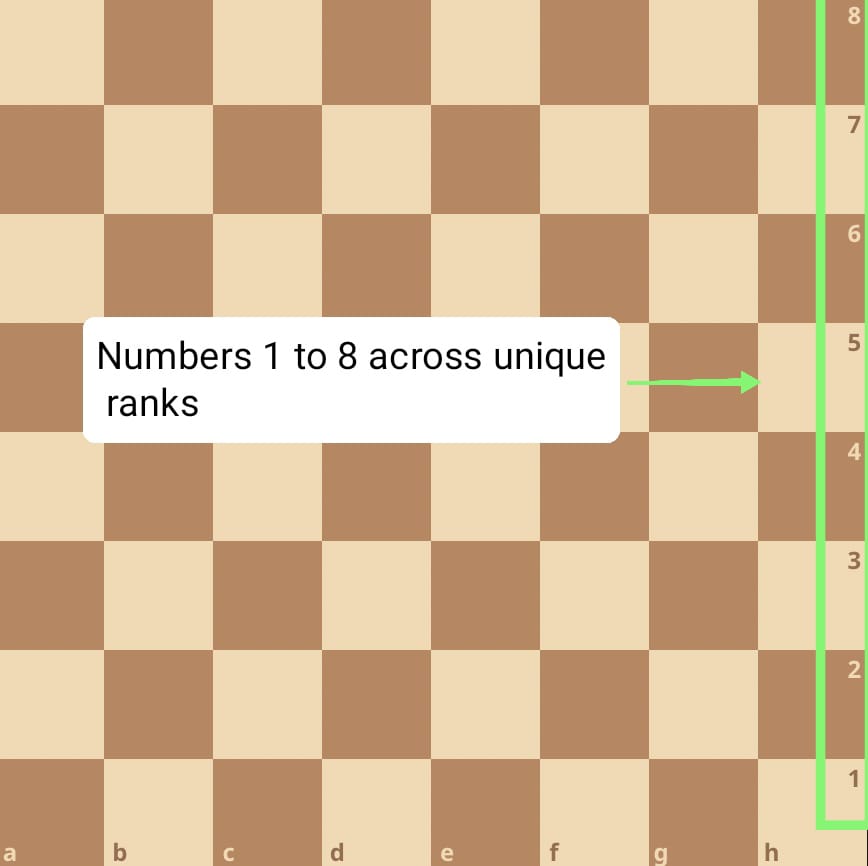
Letters
This can be divided into pieces and files.
Chess players write capital letters to represent pieces (except the pawns). They include:
- K for King
- Q for Queen
- R for Rook
- B for Bishop
- N for Knight
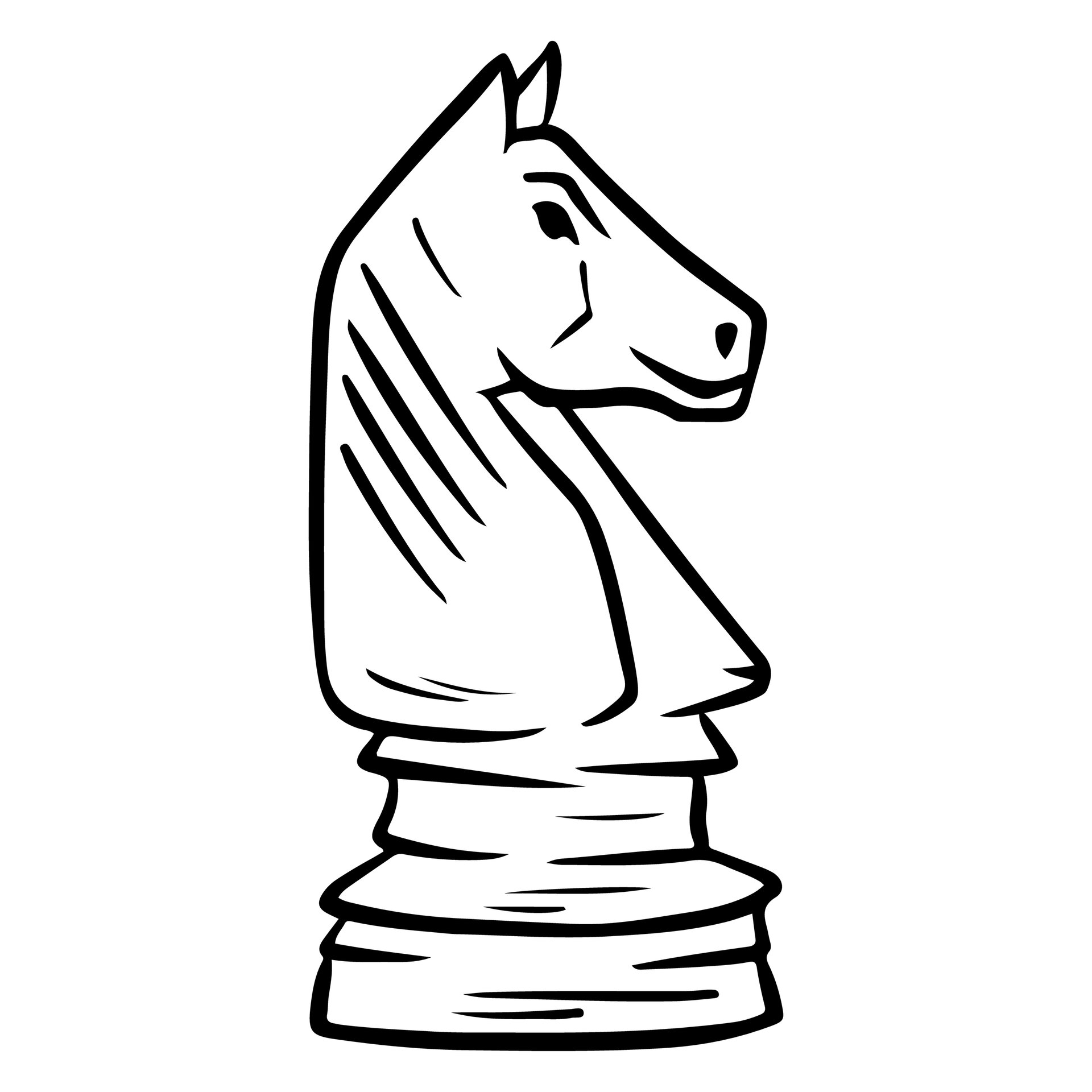
Pawns are not represented with any letter. Instead, the square they land on reflects their move.
For example, playing the king’s pawn opening by moving the e-pawn two squares forward is written as e4.
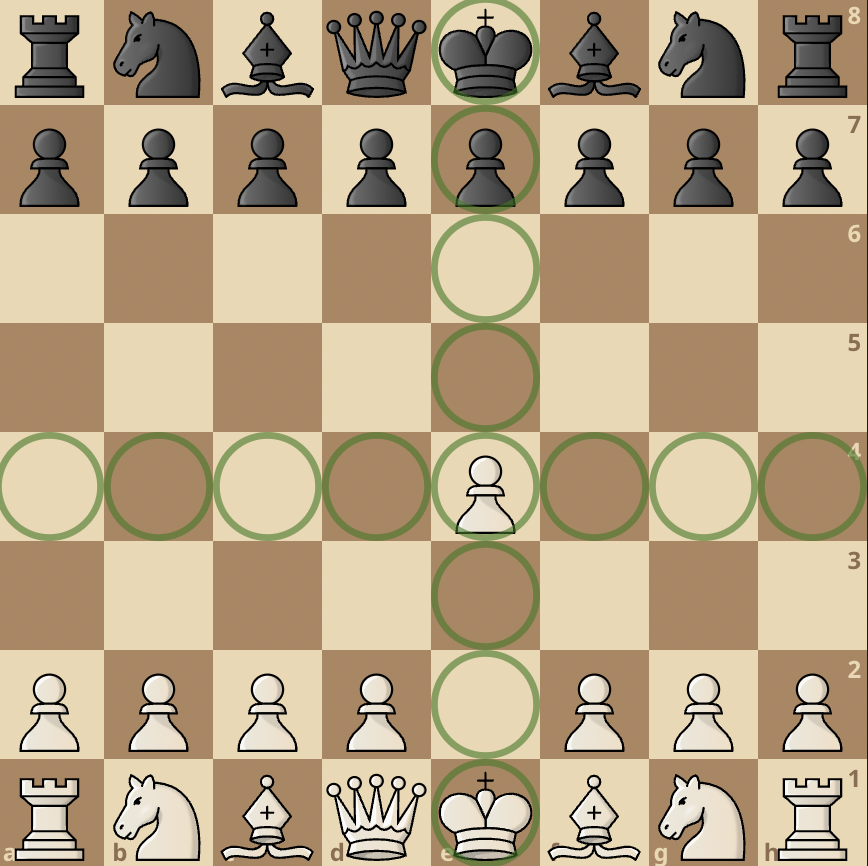
You can see that the pawn lies on the e file and the 4th rank hence the notation e4. We can also tell it as e2-e4 because the pawn is moving from the second rank to the fourth rank.
The small letters in chess notation represent the files on a chessboard.
There are eight files lettered a-h.
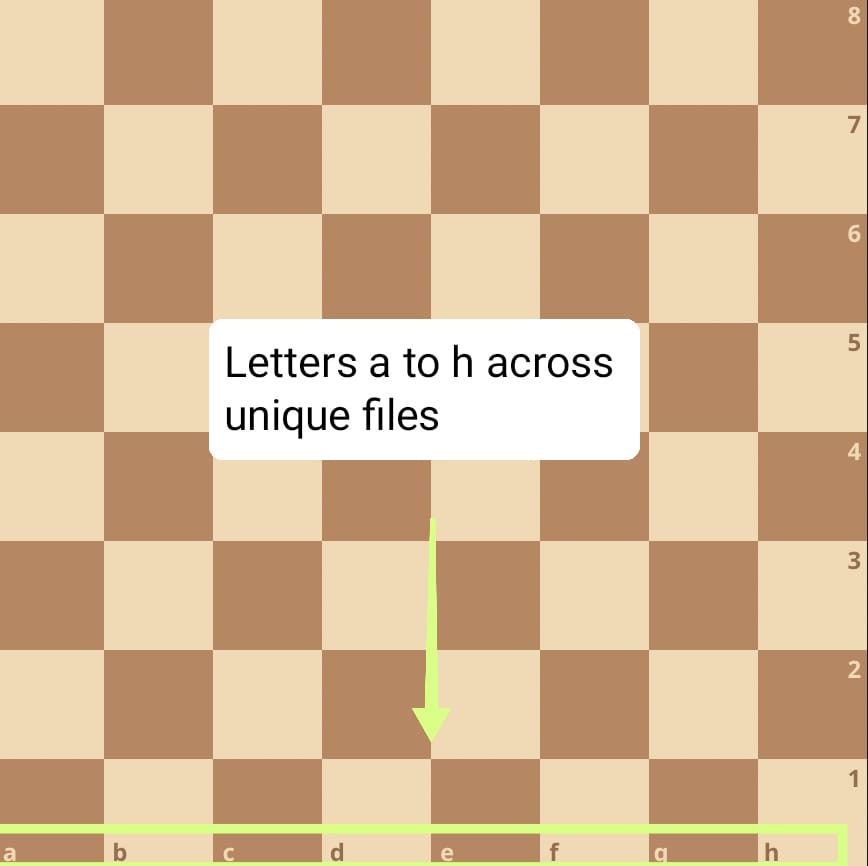
Each of these letters indicates the square pieces moved to – or moved from in special cases.
Using a letter to indicate where a piece moved from happens when a side, either Black or White, has an identical piece that can make the same move.
See what we mean:

White wants to move his rook on f1 to the square on d1. Interestingly, the rook on a1 can also move to the same square.
If White goes ahead to notate this as Rd1, there’s every chance that anyone who’s studying the notations after will be confused because they do not know the rook you mean since both rook moves work.
But when you write Rfd1, they clearly understand that you’re moving the rook in the f-file (Rf) to the square on d1 (d1). The same goes for the other rook which is notated by Rad1 (from the a file to the d file).
Other than this instance, using a file to indicate where a piece moved from is not necessary.
Another thing to note…
One MUST use letters for pieces before letters for files.
Here is why: squares are named using alphanumerics with the letters coming before the numbers. For instance, a6, b4, g2, d1, etc.
Here is another visual example:

White has a rook on a1 and on a8, and there is no other piece on the file.
If the rook on a1 moves to a4, we’ll have the notation Ra1a4. For the rook on a8, it’ll be represented by Ra8a4 (rook on a8 to a4).
What if they’re on the same rank? For instance, there’s a rook on a4 and another rook on h4.
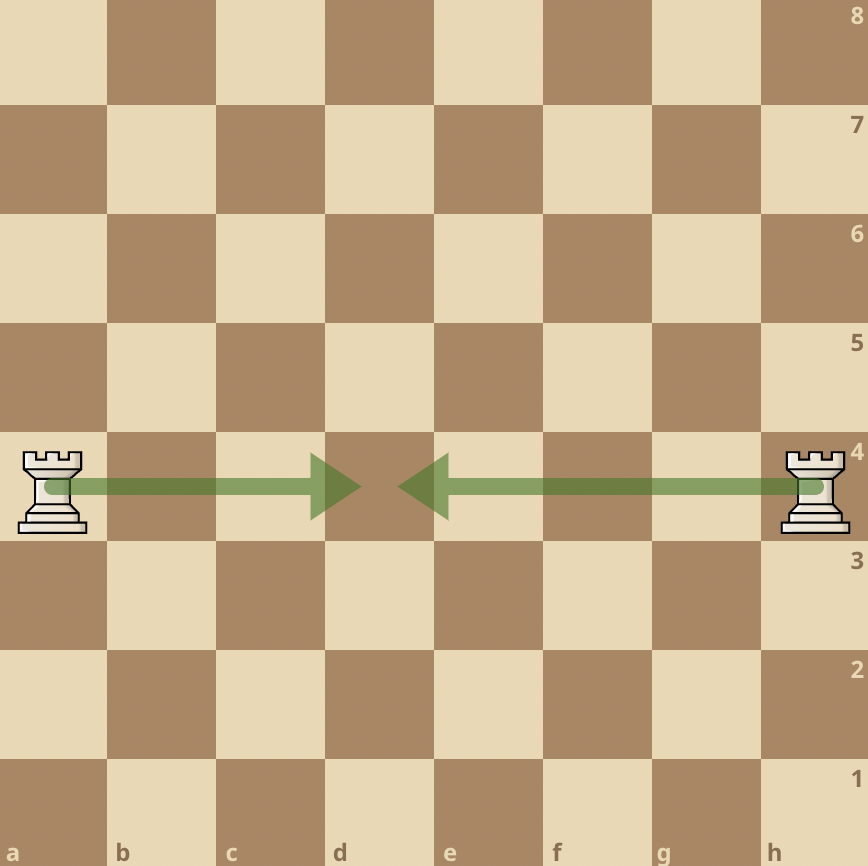
If the rook on a4 moves to d4, we’ll have Rad4. On the other hand, if the rook on h4 moves to d4, we’ll have Rhd4.
We hope you get the differences.
Symbols

Symbols represent actions made by humans during play. Some symbols are:
- # This means checkmate.
- + This means check, where the king is under direct threat.
- ++ This means double-check.
- x This means to capture.
- 0-0 This means kingside castle
- 0-0-0 This means queenside castle
- = This means promotion.
Mechanism of Chess Notations
If no action(symbols) was made
The piece’s letter comes first. That is, R, B, Q, K, N etc.
The file comes next. That is a, b, c, d, e, f, g, or h
The rank number comes next.
If there is another piece capable of moving to the square, you input the file’s letter before putting the name of the square.
For instance, ‘Rad1′ means that “A Rook(R) From a(a-file) Moved To The d1 Square.“
What follows is the symbol if there was an action performed by the piece that was played.
If an action was made

As usual, the piece’s letter comes first.
As the case may be, a symbol might follow the piece’s letter or not.
For instance,
- White bishop moving to the b5 square to check the Black King can be represented by Bb5+
- White’s rook on d-file capturing Black’s advanced pawn on a2 can be represented by Rxa2
- Black landing a two-move checkmate can be represented by Qh4# or Qd8-h4#
If an identical piece can also perform that action, you will write the file where it moves from before the action symbol. For instance, ‘Rdxe2’ means that the Rook from d-file captured the piece on e2.
Why are Chess Notations Important?
- Chess players write notations to help document the games for future reference, especially if the game was not played on an electronic board. Even electronic boards have glitches sometimes.
- Chess players use notations to prevent losing the game in case of an accident, such as when the pieces fall off the board.
- Writing notations helps to settle false claims made by deceitful players.
- Being able to review your chess games after tournaments helps you improve your chess by analyzing to see what you played and what should have been played instead.
There are also advanced chess notations known as annotations which are usually used by players and engines to describe the accuracy, horror or brilliancy of chess moves. These annotations include:
- ? means a mistake
- ?? means a blunder
- ! means a good move
- !! means a brilliant move
- ?! means an inaccuracy
- !? means an interesting move
- = means that the position is equal
- +/= means that White has a slight plus
- =/+ means that Black has a slight plus
- +/− means that White has a clear advantage
- −/+ means that Black has a clear advantage
- + − means that White has a winning advantage
- − + means that Black has a winning advantage
- ∞ means the position is unclear
Are There Any Exceptions?
Of course, there are exceptions to recording and notating your moves in chess tournaments.
- You’re required to record them when playing fast time controls such as rapid, blitz or bullet.
- You’re not required to record your moves when playing online chess.
- It’s okay to abandon your recording and focus on the game when you reach a blitz time range from a classical time control.
Have questions about the topic of chess notations? Drop them in the comments section and we’ll be happy to help you with it!
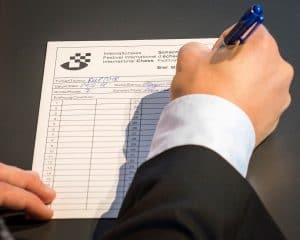






join the conversation